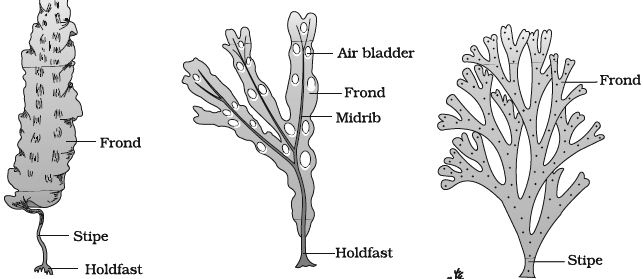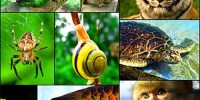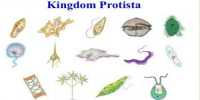The members of phaeophyceae or brown algae are found primarily in marine habitats. They show great variation in size and form. They range from simple branched, filamentous forms (Ectocarpus) to profusely branched forms as represented by kelps, which may reach a height of 100 metres. They possess chlorophyll, carotenoids and xanthophylls. They vary in color from olive green to various shades of brown depending upon the amount of the xanthophyll pigment, fucoxanthin present in them.
Food is stored as complex carbohydrates, which may be in the form of laminarin or mannitol. The vegetative cells have a cellulosic wall usually covered on the outside by a gelatinous coating of algin. The protoplast contains, in addition to plastids, a centrally located vacuole and nucleus. The plant body is usually attached to the substratum by a holdfast, and has a stalk, the stipe and leaf like photosynthetic organ-the frond. Vegetative reproduction takes place by fragmentation. Asexual reproduction in most brown algae is by biflagellate zoospores that are pear-shaped and have two unequal laterally attached flagella.
Sexual reproduction may be isogamous, anisogamous or oogamous. Union of gametes may take place in water or within the oogonium (oogamous species). The gametes are pyriform (pear-shaped) and bear two laterally attached flagella.
The common forms are Ectocarpus, Dictgota. Laminana, Sargassum and Fucus (Figure).

Figure: Brown Algae: i) Laminaria, ii) Fucus, iii) dictyota













